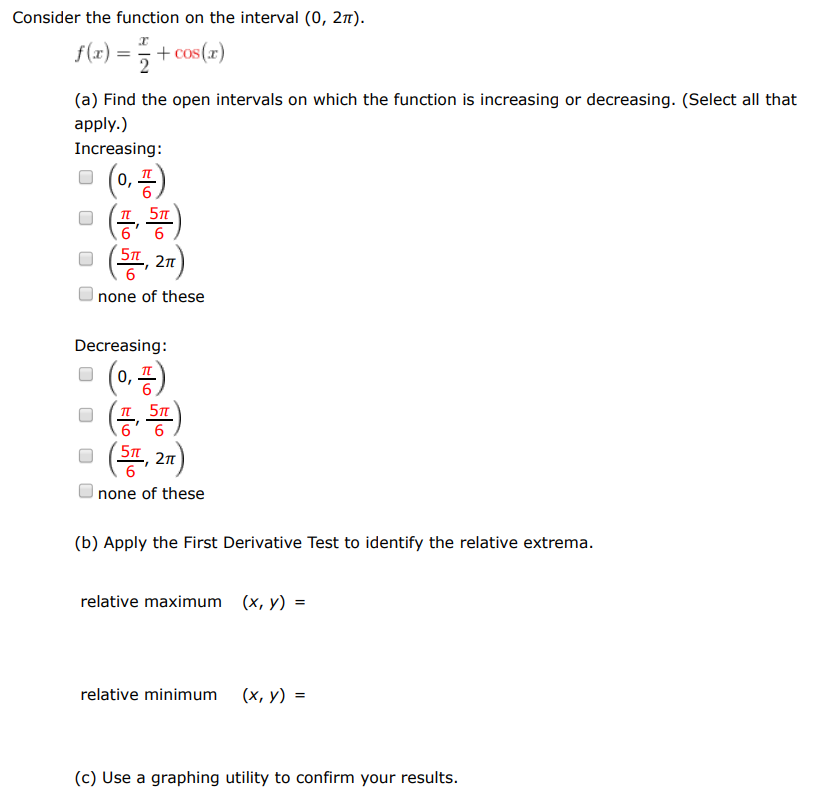Consider the function on the interval (0, 2π). f(x) = x/2 + cos(x) (a) Find the open intervals on which the function is increasing or decreasing. (Select all that apply.) Increasing: (0, π6) (π6, 5π6) (5π6, 2π) none of these Decreasing: (0, π6) (π6, 5π6) (5π6, 2π) none of these (b) Apply the First Derivative Test to identify the relative extrema. relative maximum (x, y) = relative minimum (x, y) = (c) Use a graphing utility to confirm your results.
